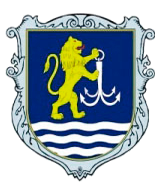ORGANIZATIONAL FEATURES OF CARGO DELIVERY USING FLEXITANKS
Abstract
Introduction. The growth of the global container multimodal transportation market has led to the development of various packaging technologies that ensure the efficient operation of containers for a wide range of cargo. One of such technologies for the transportation of bulk cargo is the flexitank, which provides the possibility of transporting these cargoes in standard containers. Despite the fact that the practical majority of transportation in flexitanks is related to vegetable oils, this technology allows the transportation of diesel fuel as well, which can be an alternative to traditional technologies of transportation of diesel fuel in periods when it is necessary. Thus, taking into account the possibilities of expanding the use of flexitanks, the issue of organizing the delivery of goods using this technology is relevant. Results. The paper considers the main organizational issues of bulk cargo transportation in flexitanks. An overview of the main sources of regulation of the container transportation process of flexitanks at the level of international maritime and trade organizations is provided; at the level of scientific and research institutions and at the practical level, by companies of the transport sector and enterprises whose system of supply of goods involves the use of container equipment. It is shown how the transition to the use of flexitanks changed the patterns of cargo transportation in containers and led to the emergence of new market entities – suppliers of flexitanks and additional equipment. The role of insurance and the risks arising in bulk cargo transportation are described. An analysis of the criteria on the basis of which transportation schemes are formed was made, and two main schemes widely used for Ukrainian export of bulk cargo in containers were considered. Conclusions. The presented results are the basis for forming in practice in the activities of transport and forwarding companies cargo delivery schemes in flexitanks for various commercial conditions and the responsibilities between the parties. The results are based on the generalized modern experience taking into account the existing opportunities of the transport services market.
Downloads
References
2. COA Code of Practice for the Manufacture of Flexitanks and Operation of Flexitank/Container Combinations. URL: www.containerownersassociation.org (дата звернення: 26.04.2023)
3. Best Practice Guidelines for loading, transport and unloading of flexitanks URL: https://cefic.org/app/uploads/2018/12/BestPracticeGuidelinesfor-loading-transport-and-unloading-of-flexitank_2018-GUIDELINESROAD.pdf (дата звернення: 26.04.2023)
4. Онищенко, С. П., Коскіна, Ю. О. Сутність, специфіка і формування систем доставки вантажів. Вісник Вінницького політехнічного інституту. 2019. № 3. С. 86-95. doi: 10.31649/1997-9266-2019-144-3-86-95
5. Rusanova S., Onyshсhenko S., Piterska V. Modelling the Project Transport Support Optimal Option. Technology audit and production reserves. 2021. № 1 (2 (57)). С. 43-48. doi: 10.15587/2706-5448.2021.225288
6. Дацко М. В. Побудова транспортних маршрутів у логістиці. Науковий вісник Херсонського державного університету. Сер.: Економічні науки. 2016. Вип. 16(4). С. 152-155.
7. Shramenko M. Effect of process-dependent parameters of the handlingand-storage facility operation on the cargo handling cost. Eastern-European Journal of Enterprise Technologies. 2015. 5(3(77), P. 43–47. doi: 10.15587/1729-4061.2015.51396
8. Коскіна Ю. О. Формалізація процесу організації системи доставки вантажів. Наукоємні технології. 2020. 45(1), C. 111-117. doi:10.18372/2310-5461.45.14582
9. Rusanova S., Onyshсhenko S. (2020). Development of transport and technological process options' concept for goods delivery with participation of maritime transport. Technology audit and production reserves. 2020. № 1(2 (51)). С. 24-29. doi: 10.15587/2312-8372.2020.198373
10. Коскіна Ю. О. Теоретико-множинний підхід до моделювання структури систем доставки вантажів. Вісник Вінницького політехнічного інстиуту. 2019. (5), C. 62–74. doi:10.31649/1997-9266-2019-146-5-62-74
11. Павлова Н.Л. Сіткова модель процесу організації доставки вантажiв у контейнерах. Transport development. 2020. №2 (7). С. 52-59. doi: 10.33082/td.2020.2-7.05
12. Кічкіна О. І. Вибір оптимальної схеми доставки вантажу в логістичних системах. Вісник Східноукраїнського національного університету імені Володимира Даля. 2015. № 2. C. 9–11.
13. Берестенко В., Онищенко С. Імовірнісні характеристики мультимодальної доставки. Розвиток транспорту. 2022. № (1(12). С. 118-128. doi: 10.33082/td.2022.1-12.10
14. Берестенко В., Онищенко С. Структура й характеристики мультимодальної доставки з позиції цифровізації. Розвиток транспорту. 2022. № 4(11). С. 82-93. doi: 10.33082/td.2021.4-11.08
15. Carefully to carry consolidated edition 2018 (2018) Witherby Publishing Group Ltd, 697.
16. Laura West (2008)Guide of Good Practices for the Transport of Wine in Flexitanks. URL: www.b-i-b.com (дата звернення: 26.04.2023)
17. CTU-Code2022 URL: http://contents.kocw.or.kr/KOCW/document/2014/Chungang/SallyMARTIN/5.pdf (дата звернення: 26.04.2023)
18. Liqua Trans (no-bulkhead flexies) URL: https://ancdist.com.au/integratedbulkhead-flexitanks/ (дата звернення: 26.04.2023)
19. Getting agitated. Bulk Distributor URL: Ashley & Dumville Publishing http://bulk-distributor.com/ (дата звернення: 26.04.2023)
20. Stolt expands depot network. Bulk Distributor. URL: Ashley & Dumville Publishing http://bulk-distributor.com/ (дата звернення: 26.04.2023)





